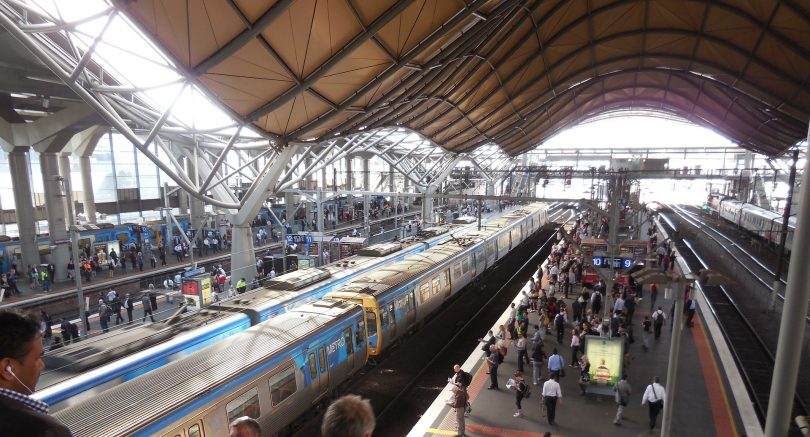In the last two years, crime on public transport, particularly train stations has increased, according to data from Crime Statistics Victoria. The introduction of protective service officers or PSOs has been a strategy to try and lower crime at train stations. They are now deployed at over 200 stations across Melbourne and regional Victoria with a hope to stop and deter crime. So why is crime still rising?
Overall, crime in Victoria has dropped by 0.5 per cent over the last five years, while crime on public transport has jumped 0.88 per cent. Why the public transport numbers are going in the opposite direction is a matter of debate. The introduction of the PSO is one reason that the Victorian Government think could be the cause. They released a report addressing this,
“Increasing police numbers typically leads to an increase in recorded crime. This is because more police members are available to detect more crime.”
In the last two years, crime in train stations has jumped 0.60 per cent, with the presence of protective service officers. Meanwhile, crime on most other forms of public transport have plateaued, without the presence of PSOs.
Their has been an increase in advertising surrounding PSOs after the report from the victorian government recommended a greater public awareness.
The report stated, “Lack of awareness of the presence and role of PSOs impacts on perceptions of safety. Knowing PSOs are present and observing them patrolling platforms increases commuters’ perceptions of safety.”
This may account for the slight drop in crime from 2017 to 2018, but the full impact PSOs have on crime is yet to be evaluated. The PSO program has also come under some scrutiny after an officer attacked a man in Melbourne earlier this year. The correlation between their training and their power has been questioned by the Greens.
Victoria Police believe, “They’re (PSOs) highly trained to detect and assist with any safety issues that could arise at a station.”
The types of crime being reported on public transport is split up into three main areas, theft, criminal damage and deception.
Theft and criminal damage account for the majority of crime on public transport.







